






Do you have a question about the Polycom VVX 150 and is the answer not in the manual?
Terms and conditions for product usage. The EULA is available on the Poly Support page.
Disclaimer regarding warranties and liability for document information and use.
Request for customer feedback to improve documentation quality.
Intended audience, purpose, and skill requirements for the user guide.
Links to sites providing information related to the product.
Understanding hardware features and keys available on VVX business IP phones.
Description of hardware features on the VVX 150 business IP phones.
How to access phone features and settings from the Main Menu screen.
How to access the Calls screen for managing active and held calls.
Viewing phone lines, favorites, and softkeys on the Lines screen.
Using dial pad keys to edit or update field information on the phone.
Logging into a phone to access personal settings, contacts, and features.
Procedure for logging into a Poly phone to access personal settings and directory.
Procedure for logging out of the phone to prevent access to personal settings.
Steps to change the login password from any phone on the network.
Options for handling incoming calls when the phone is locked.
Procedure to unlock the phone using the user password.
Managing audio calls, including call limits, lines, and call progression.
Using the dialer to enter numbers or select recent contacts to place a call.
How to place calls to international phone numbers.
Placing an active call on hold.
Viewing and resuming a held call.
Selecting the default transfer type for all calls on the phone.
Transferring a call to another contact with a chosen transfer type.
Cancelling a call transfer before it completes.
Parking a call directly on a contact's line.
Retrieving a call that was parked on your line.
Managing calls by holding, resuming, or transferring from the Calls screen.
Enabling and configuring BroadWorks Anywhere locations for call management.
Editing enabled BroadWorks Anywhere locations.
Adding a remote office number for call forwarding.
Disabling Remote Office to stop call forwarding.
Silencing a call's ringer without rejecting it.
Rejecting calls and sending them directly to voicemail.
Using Do Not Disturb to automatically reject calls when busy.
Preventing phone ringing and sending calls to voicemail.
Starting conference calls, splitting, holding, or resuming them.
Initiating a conference call with up to two contacts.
Joining active and held calls to create a conference call.
Ending a conference call.
Features with limitations or unavailability on shared lines.
How incoming calls on shared lines ring on all registered phones.
How missed and received calls are displayed on shared lines.
Enabling Simultaneous Ring to create a personal ring group.
Adding extensions and numbers to the Simultaneous Ring list.
Enabling Call Filtering to send executive calls directly to an assistant.
How assistants answer, reject, or ignore executive calls.
Guidelines for recording calls, including informing contacts and muting audio.
Recording an active audio call.
Pausing a recording during an active call.
Stopping a call recording before or after the call ends.
List of missed, received, and placed calls, with up to 100 entries per list.
Sorting recent calls by type, time, and name.
Viewing call details, editing, saving, or deleting call entries.
Searching for desired contacts within the Contact Directory.
Adding contacts with chosen information, requiring only a phone number.
Updating contact information stored in the contact directory.
Performing quick or advanced contact searches in the Corporate Directory.
Saving corporate directory contacts to the local Contact Directory.
Accessing and searching BroadSoft directories via simple or advanced search.
Adding, designating index numbers, viewing, and deleting favorites.
Adding contacts to favorites, assigning an index number.
Changing the display order of favorites on Home or Lines screen.
Adding contacts to a Buddy list to monitor their status.
Viewing contacts displayed in the Buddy list.
Viewing presence information for UC-One contacts.
Viewing UC-One contacts and favorites on Home/Lines screen and Contacts list.
How the phone indicates new voicemail and accessing messages.
Sending and receiving instant messages to other phones on the network.
Sending messages using preset lists or custom text.
Sending a group page without selecting a specific group.
Receiving pages on subscribed paging groups, including priority and emergency broadcasts.
Changing the default channel for automatic broadcast transmission.
Enabling broadcasts to play during active calls when Accept While Busy is on.
Viewing and joining meetings scheduled in Microsoft Outlook.
Accessing the calendar on the phone to view and join meetings.
Display of meeting reminders and alert tones before meetings start.
An interactive browser for searching the internet and viewing web pages.
Opening the Web Browser with navigation and editing soft keys.
Customizing the font size from available options.
Manually adding a new wireless network from the Basic menu.
Enabling wireless connectivity using a Poly Wi-Fi adapter.
Connecting to secured wireless networks using PSK or enterprise security.
Selecting a theme to control the display of icons and screens.
Choosing the language to display on the phone.
Changing backlight brightness and timeout settings.
Changing the background picture displayed on the phone.
Enabling screen savers with default or USB photos.
Specifying office hours to manage idle time and power saving mode.
Updating idle timeouts for office and nonoffice hours.
Choosing where sound effects are heard for incoming calls.
Personalizing the phone by changing the ringtone for different lines.
Suppressing background noise to enhance call audio quality.
Updating status so contacts can monitor it from their phones.
Viewing assigned security classification for all phone lines.
Changing security classification level during a call to allow or restrict users.
Clearing personal history of stored call logs and contacts.
Configuring the headset to alert on incoming calls.
Setting the headset to notify when the microphone is muted.
Notifying when the headset microphone is muted in an active call.
Adjusting bass and treble settings for the headset speaker.
Connecting and using a headset for calls and EHS.
Phone behavior when connected to analog and USB headsets.
Enabling headset for all incoming and outgoing calls via Headset Memory Mode.
Downloading, installing, and activating Polycom Desktop Connector (PDC).
Enabling PDC via Ethernet cable for automatic credential detection.
Enabling PDC via a switch, requiring manual entry of computer IP and credentials.
Disabling PDC to stop using computer mouse/keyboard for phone control.
Performing tasks like cut/copy/paste and navigation using keyboard shortcuts.
Answering calls using an expansion module.
Placing a call using an expansion module.
Connecting an expansion module to a VVX phone for automatic configuration.
Disconnecting a VVX EM50 expansion module from an IP phone.
Assigning favorites to line keys on expansion modules for auto-dialing.
Navigating pages of line information on expansion module LCD screens.
Accessibility features for deaf or hard of hearing users.
Accessibility features for users with limited mobility.
Viewing details of issues from the Warnings screen.
Restarting the phone to resolve issues or update configuration.
Cleaning the phone screen periodically with a microfiber cloth.
Troubleshooting issues with the speakerphone not working.
Troubleshooting issues with USB device detection or port functionality.
Table of common recording issues and their solutions.
Resetting the phone to factory default settings.
Terms and conditions for product usage. The EULA is available on the Poly Support page.
Disclaimer regarding warranties and liability for document information and use.
Request for customer feedback to improve documentation quality.
Intended audience, purpose, and skill requirements for the user guide.
Links to sites providing information related to the product.
Understanding hardware features and keys available on VVX business IP phones.
Description of hardware features on the VVX 150 business IP phones.
How to access phone features and settings from the Main Menu screen.
How to access the Calls screen for managing active and held calls.
Viewing phone lines, favorites, and softkeys on the Lines screen.
Using dial pad keys to edit or update field information on the phone.
Logging into a phone to access personal settings, contacts, and features.
Procedure for logging into a Poly phone to access personal settings and directory.
Procedure for logging out of the phone to prevent access to personal settings.
Steps to change the login password from any phone on the network.
Options for handling incoming calls when the phone is locked.
Procedure to unlock the phone using the user password.
Managing audio calls, including call limits, lines, and call progression.
Using the dialer to enter numbers or select recent contacts to place a call.
How to place calls to international phone numbers.
Placing an active call on hold.
Viewing and resuming a held call.
Selecting the default transfer type for all calls on the phone.
Transferring a call to another contact with a chosen transfer type.
Cancelling a call transfer before it completes.
Parking a call directly on a contact's line.
Retrieving a call that was parked on your line.
Managing calls by holding, resuming, or transferring from the Calls screen.
Enabling and configuring BroadWorks Anywhere locations for call management.
Editing enabled BroadWorks Anywhere locations.
Adding a remote office number for call forwarding.
Disabling Remote Office to stop call forwarding.
Silencing a call's ringer without rejecting it.
Rejecting calls and sending them directly to voicemail.
Using Do Not Disturb to automatically reject calls when busy.
Preventing phone ringing and sending calls to voicemail.
Starting conference calls, splitting, holding, or resuming them.
Initiating a conference call with up to two contacts.
Joining active and held calls to create a conference call.
Ending a conference call.
Features with limitations or unavailability on shared lines.
How incoming calls on shared lines ring on all registered phones.
How missed and received calls are displayed on shared lines.
Enabling Simultaneous Ring to create a personal ring group.
Adding extensions and numbers to the Simultaneous Ring list.
Enabling Call Filtering to send executive calls directly to an assistant.
How assistants answer, reject, or ignore executive calls.
Guidelines for recording calls, including informing contacts and muting audio.
Recording an active audio call.
Pausing a recording during an active call.
Stopping a call recording before or after the call ends.
List of missed, received, and placed calls, with up to 100 entries per list.
Sorting recent calls by type, time, and name.
Viewing call details, editing, saving, or deleting call entries.
Searching for desired contacts within the Contact Directory.
Adding contacts with chosen information, requiring only a phone number.
Updating contact information stored in the contact directory.
Performing quick or advanced contact searches in the Corporate Directory.
Saving corporate directory contacts to the local Contact Directory.
Accessing and searching BroadSoft directories via simple or advanced search.
Adding, designating index numbers, viewing, and deleting favorites.
Adding contacts to favorites, assigning an index number.
Changing the display order of favorites on Home or Lines screen.
Adding contacts to a Buddy list to monitor their status.
Viewing contacts displayed in the Buddy list.
Viewing presence information for UC-One contacts.
Viewing UC-One contacts and favorites on Home/Lines screen and Contacts list.
How the phone indicates new voicemail and accessing messages.
Sending and receiving instant messages to other phones on the network.
Sending messages using preset lists or custom text.
Sending a group page without selecting a specific group.
Receiving pages on subscribed paging groups, including priority and emergency broadcasts.
Changing the default channel for automatic broadcast transmission.
Enabling broadcasts to play during active calls when Accept While Busy is on.
Viewing and joining meetings scheduled in Microsoft Outlook.
Accessing the calendar on the phone to view and join meetings.
Display of meeting reminders and alert tones before meetings start.
An interactive browser for searching the internet and viewing web pages.
Opening the Web Browser with navigation and editing soft keys.
Customizing the font size from available options.
Manually adding a new wireless network from the Basic menu.
Enabling wireless connectivity using a Poly Wi-Fi adapter.
Connecting to secured wireless networks using PSK or enterprise security.
Selecting a theme to control the display of icons and screens.
Choosing the language to display on the phone.
Changing backlight brightness and timeout settings.
Changing the background picture displayed on the phone.
Enabling screen savers with default or USB photos.
Specifying office hours to manage idle time and power saving mode.
Updating idle timeouts for office and nonoffice hours.
Choosing where sound effects are heard for incoming calls.
Personalizing the phone by changing the ringtone for different lines.
Suppressing background noise to enhance call audio quality.
Updating status so contacts can monitor it from their phones.
Viewing assigned security classification for all phone lines.
Changing security classification level during a call to allow or restrict users.
Clearing personal history of stored call logs and contacts.
Configuring the headset to alert on incoming calls.
Setting the headset to notify when the microphone is muted.
Notifying when the headset microphone is muted in an active call.
Adjusting bass and treble settings for the headset speaker.
Connecting and using a headset for calls and EHS.
Phone behavior when connected to analog and USB headsets.
Enabling headset for all incoming and outgoing calls via Headset Memory Mode.
Downloading, installing, and activating Polycom Desktop Connector (PDC).
Enabling PDC via Ethernet cable for automatic credential detection.
Enabling PDC via a switch, requiring manual entry of computer IP and credentials.
Disabling PDC to stop using computer mouse/keyboard for phone control.
Performing tasks like cut/copy/paste and navigation using keyboard shortcuts.
Answering calls using an expansion module.
Placing a call using an expansion module.
Connecting an expansion module to a VVX phone for automatic configuration.
Disconnecting a VVX EM50 expansion module from an IP phone.
Assigning favorites to line keys on expansion modules for auto-dialing.
Navigating pages of line information on expansion module LCD screens.
Accessibility features for deaf or hard of hearing users.
Accessibility features for users with limited mobility.
Viewing details of issues from the Warnings screen.
Restarting the phone to resolve issues or update configuration.
Cleaning the phone screen periodically with a microfiber cloth.
Troubleshooting issues with the speakerphone not working.
Troubleshooting issues with USB device detection or port functionality.
Table of common recording issues and their solutions.
Resetting the phone to factory default settings.
| Resolution | 132 x 64 pixels |
|---|---|
| Opus Support | No |
| Wireless | No |
| Bluetooth | No |
| USB Port | No |
| Ethernet Ports | 2 x 10/100 Mbps |
| Power over Ethernet (PoE) | Yes (802.3af) |
| SIP Accounts | 2 |
| Audio Features | HD Voice |
| Headset Support | Yes |
| Network Protocols | SIP, SDP |
| Supported Codecs | G.711, G.729, G.722, iLBC |
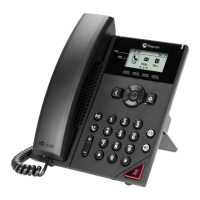
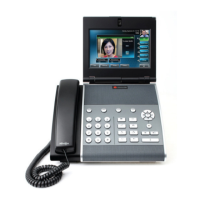
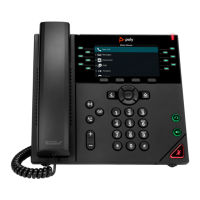
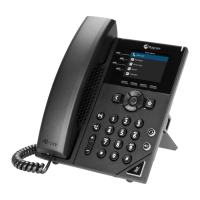
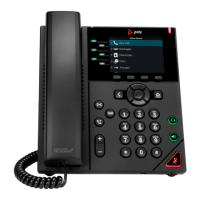
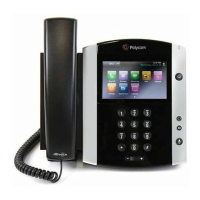
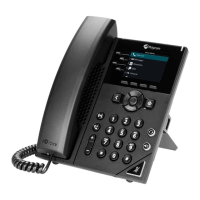
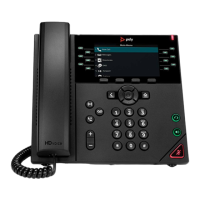
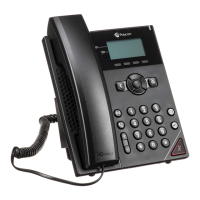
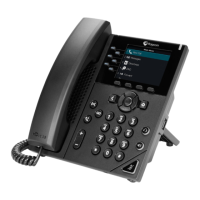
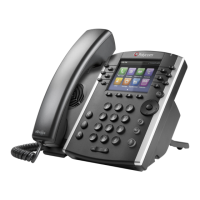
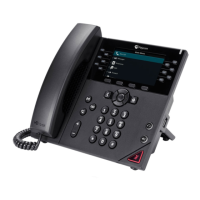
